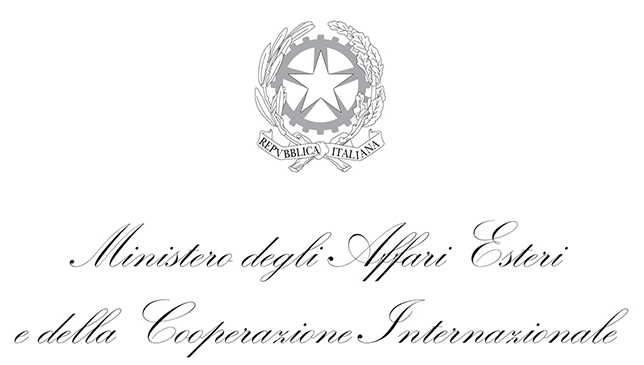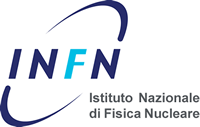- The beauty of science. Spectacular setting that shows video images associated with tilted mirrors. The effect allows visitors to “dive” into a giant kaleidoscope of images assembled in sequence. The photographs, of great charm and beauty, all taken within the Italian research laboratories, come from the archive of the contest “RiScattiamo la Scienza" organized by CNR in 2013 on the occasion of the celebrations for its 90th anniversary. (CNR Communication and Information Office)
- Pyramid International Laboratory-Observatory. Three-dimensional structure that reproduces the laboratory "Ev-K2-CNR Pyramid", with video screens integrated on the walls. The "Pyramid" laboratory is a CNR research base, located at 5050 meters above sea level on the Nepalese side of Mount Everest and hosts scientists from all over the world. It offers a unique opportunity for the study of climate and environmental changes, medicine and human physiology in extreme conditions, geology, geophysics and seismic phenomena. (Ev-K2-CNR)
- Underneath the painting. The exhibit illustrates with texts and images the infrared multi-spectral scanner used by the Opificio delle Pietre Dure in Florence to study the ancient paintings and to “see” underneath the surface of the painting. The visitor can experiment infrared reflectography thanks to an interactive exhibit. (CNR NAO - National Institute of Optics)
- Robotic hand-IH2 Azzurra. Prototype of a robotic hand which can be directly operated by the visitor through control keys placed on the touch screen. (St. Anna School of Advanced Studies; Prensilia S.r.l.)
- The gift of the mass. The gift of the mass is the first interactive exhibit in the world that tries to explain the complicated physical mechanism that causes the “objects” in the universe to have a mass, the so-called Higgs mechanism. (INFN-National Institute for Nuclear Physics)
- Magnet AMS. The exhibit shows the magnet built for "AMS", the experiment carried out on the International Space Station to reveal the antimatter. The visitor can interactively experience how a magnetic field can be confined by inserting metal objects inside a cylinder strongly magnetized. (INFN-National Institute for Nuclear Physics)
- Crystal of Lead Tungstate. The crystal of lead tungstate is one of the crystals that constitute the electromagnetic calorimeter of the CMS experiment at CERN in Geneva. These crystals are scintillating, transparent, denser than iron and allow the absorption, in a length of just 23 cm, of high energy electrons and photons. (INFN-National Institute for Nuclear Physics)
- Virtual Tour of Gran Sasso. A virtual tour in the striking reality of the INFN National Laboratories of Gran Sasso, located partly on the surface and partly underground, where the experiments are conducted. Research activity in the field of astro-particle physics is carried out at the Gran Sasso Laboratories. (INFN-National Institute for Nuclear Physics)
- Flying over water. Model of a completely innovative seaplane tested in experimental tank. The exhibit presents the model of fuselage tested in tank, a scale model of the seaplane, images and videos of the study and design phases. (CNR INSEAN-Marine Technology Research Institute)
- Plantoid. Innovative robot inspired by plants that, combining a new generation of hardware and software technologies, is able to mimic the behavior of the roots. "The android plant" consists of a root apex fitted with sensors, actuators and control unit, and of a robotic trunk, mechanically connected to each other by an elongated structure. (IIT- Italian Institute of Technology)
- MARC (Magnetic Autonomous Robotic Crawler). Robotic Crawler able to “climb” vertical metal walls, designed for the inspection of hulls of oil tankers and large cargo ships. Visitors can drive and move the robot on a vertical wall made on purpose. (CNR ISSIA-Institute of Intelligent Systems for Automation )
- GiraffPlus. Introduces the paradigm of the AAL (Ambient Assisted Living) through techniques of ambient intelligence. The system is based on the use of sensors placed inside the home and the use of a telepresence robot, Giraff, as the main interface between the user and the home and between the user and the network of relatives and caregivers, providing an alternative means of communication that allows you to interact at a distance. The robot exhibition is produced by Giraff AB (Sweden), while the sensors are produced by Tunstall (UK). (CNR ISTC- Institute of Cognitive Sciences and Technologies, Rome; CNR ISTI-Institute of Information Science and Technologies)
- iCub. Humanoid robot about the size of a 3 year-old child. The exhibit is made of a display cabinet hosting a static iCub, accompanied by a video activated on a touch mode by the visitor and showing the robot in action. (IIT- Italian Institute of Technology)
- DustCart.The displayed robot is a maquette of the real DustCart robot and has the following features: lighting eyes, interior lighting, display board able to show videos and graphic interface. (St. Anna School of Advanced Studies)
- HyQ. Four-legged robot able to walk and move on any type of ground. Some components are shown on a large vertical display and accompanied by a video showing the complete robot in action. (IIT- Italian Institute of Technology)
- Technological textiles. Interactive exhibit presenting natural textiles which, after a process of ceramization, show self cleaning properties once exposed at the sunlight. The visitor is invited to pour a few drops of dye on a sample of tissue. By turning a light switch on, a powerful lamp will illuminate the tissue and cancel the stain in a few seconds. (CNR ISTEC-Institute of Science and Technology for Ceramics)
- Bone Aid. Exposition of innovative bone samples obtained chemically transforming wood into hydroxylapatite. The innovative idea is to use structures produced and optimized by nature, transforming them into hydroxylapatite (the material that constitutes 75% of the natural bone) without changing the original structure. (CNR ISTEC-Institute of Science and Technology for Ceramics)
- Etruscanning. Virtual reproduction of the Regolini-Galassi Etruscan tomb. The audience, walking on a special carpet and moving the body in space, has the opportunity to visit virtually the famous Etruscan tomb in Cerveteri, and observe it through the eyes of its discoverers, Archpriest Alexander Regolini and General Vincenzo Galassi, who in 1836 first admired the precious funerary objects buried inside the tomb. (CNR ITABC-Institute of Technologies Applied to Cultural Heritage)
- Villa Livia Reloaded. Virtual reproduction of the Villa belonging to Livia and Augustus, on the Via Flaminia in Rome. The installation introduces innovative elements as the interaction paradigm that uses natural interfaces based on body language and new forms of media integration, virtual reality and movie language (CNR ITABC-Institute of Technologies Applied to Cultural Heritage)
-
Italian Archaeological Missions abroad. Interactive system on a large touch screen, which allows the visitor to explore the Italian archaeological missions abroad, supported by the Ministry of Foreign Affairs. (MAECI-Ministry of Foreign Affairs and International Cooperation; CNR)





